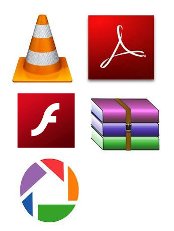

W3C
W3C is short for "World Wide Web Consortium." The W3C is an international organization that develops Web standards. It is comprised of a full-time staff, a community of member organizations, and industry experts. By creating and publishing Web standards, the W3C aims to help ensure the long-term growth of the Web. Software developers and device manufacturers can adopt the W3C standards, which helps ensure their programs and equipment will work with the latest Web technologies.
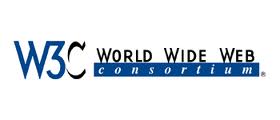
Example: "The W3C has developed several HTML, CSS, and XML standards for the Web."
WAN
Stands for "Wide Area Network." It is similar to a Local Area Network (LAN), but it's a lot bigger. Unlike LANs, WANs are not limited to a single location. Many wide area networks span long distances via telephone lines, fiber-optic cables, or satellite links. They can also be composed of smaller LANs that are interconnected. The Internet could be described as the biggest WAN in the world.
Web 2.0
Web 2.0 is term that was introduced in 2004 and refers to the second generation of the World Wide Web. The term "2.0" comes from the software industry, where new versions of software programs are labeled with an incremental version number. Like software, the new generation of the Web includes new features and functionality that was not available in the past. However, Web 2.0 does not refer to a specific version of the Web, but rather a series of technological improvements.
Some examples of features considered to be part of Web 2.0 are listed below:
Blogs - also known as Web logs, these allow users to post thoughts and updates about their life on the Web.
Wikis - sites like Wikipedia and others enable users from around the world to add and update online content.
Social networking - sites like Facebook and MySpace allow users to build and customize their own profile sand communicate with friends.
Web applications - a broad range of new applications make it possible for users to run programs directly in a Web browser.
Web 2.0 technologies provide a level user interaction that was not available before. Websites have become much more dynamic and interconnected, producing "online communities" and making it even easier to share information on the Web. Because most Web 2.0 features are offered as free services, sites like Wikipedia and Facebook have grown at amazingly fast rates. As the sites continue to grow, more features are added, building off the technologies in place. So, while Web 2.0 may be a static label given to the new era of the Web, the actual technology continues to evolve and change.
Web Host
In order to publish a website online, you need a Web host. The Web host stores all the pages of your website and makes them available to computers connected to the Internet. The domain name, such as "sony.com," is actually linked to an IP address that points to a specific computer. When somebody enters your domain name into their browser's address field, the IP address is located and Web site is loaded from your Web host.
A Web host can have anywhere from one to several thousand computers that run Web hosting software, such as Apache, OS X Server, or Windows Server. Most websites you see on the Web are accessed from a "shared host," which is a single computer that can host several hundred Web sites. Larger websites often use a "dedicated host," which is a single machine that hosts only one website. Sites with extremely high amounts of traffic, such as apple.com or microsoft.com, use several computers to host one site.
If you want to publish your own website, you'll need to sign up for a "Web hosting service." Finding a good Web host shouldn't be too hard, since their are thousands available. Just make sure the Web host you choose offers good technical support and ensures little or no downtime. You'll usually have to pay a monthly fee that varies depending on how much disk space and bandwidth your site will use. So it's a good idea to estimate how big your site will be and how much traffic you expect before signing up for a Web hosting service.
Web Page
Web pages are what make up the World Wide Web. These documents are written in HTML (hypertext markup language) and are translated by your Web browser. Web pages can either be static or dynamic. Static pages show the same content each time they are viewed. Dynamic pages have content that can change each time they are accessed. These pages are typically written in scripting languages such as PHP, Perl, ASP, or JSP. The scripts in the pages run functions on the server that return things like the date and time, and database information. All the information is returned as HTML code, so when the page gets to your browser, all the browser has to do is translate the HTML.
Please note that a Web page is not the same thing as a Web site. A Web site is a collection of pages. A Web page is an individual HTML document. This is a good distinction to know, as most techies have little tolerance for people who mix up the two terms.
Webcam
The term webcam is a combination of "Web" and "video camera." The purpose of a webcam is, not surprisingly, to broadcast video on the Web. Webcams are typically small cameras that either attach to a user's monitor or sit on a desk. Most webcams connect to the computer via USB, though some use a Firewire connection. Webcams typically come with software that allows the user to record video or stream the video on the Web. If the user has a website that supports streaming video, other users can watch the video stream from their Web browsers.
Webcams can also be used for video chat sessions with other people. Instead of broadcasting the video on the Web, users can set up a video chat session with one or more friends and have a conversation with live audio and video. For example, Apple's iSight camera, which is built into Apple laptops and iMacs, allows users to video chat using the iChat instant messaging program. Several other chat programs also work with webcams, allowing users to set up video chat sessions with friends.
Since streaming video over the Internet requires a lot of bandwidth, the video stream is typically compressed to reduce the "choppiness" of the video. The maximum resolution of a webcam is also lower than most handheld video cameras, since higher resolutions would be reduced anyway. For this reason, webcams are relatively inexpensive compared to most video cameras. And while they may not be ideal for filming a movie, webcams are great for video chat sessions with friends.
Webmail
There are two primary ways of checking your e-mail : using an e-mail program like Microsoft Outlook or with a Web-based interface called webmail. When you check or send e-mail via the Web, you are using webmail. Most free e-mail services, such as Gmail, Hotmail, and Yahoo! Mail offer webmail interfaces that allow you to send, receive, and organize your e-mail on the Web. If you own a domain name, many Web hosts also offer a webmail interface to use with your domain name or website. Some common webmail systems supported by Web hosts include Horde, NeoMail, and SquirrelMail.
Because webmail is run from a server, the messages downloaded to your inbox are saved on the mail server. This is convenient since you can check your mail and browse old messages from any computer as long as you have an Internet connection. The downside is that, since the messages are not downloaded to your computer, you need an Internet connection to view your messages : even ones that you have already viewed.
If you only have one e-mail account, webmail may be the simplest way to check, send, and manage your e-mail. However, if you regularly use multiple e-mail accounts, a software e-mail client like Microsoft Outlook or Mac OS X Mail may be a better choice.
Webmaster
The webmaster is the person in charge of maintaining a Web site. The jobs of a webmaster include writing HTML for Web pages, organizing the Web site's structure, responding to e-mails about the Web site, and keeping the site up-to-date. On some Web sites you might see a phrase that says, "send dead links and other Web site problems to webmaster@domainame.com." At times, being a webmaster can be a rather arduous job. I received some dead links in the mail one time, and let me tell you, it wasn't pretty.
Website
A website, or Web site, is not the same thing as a Web page. Though the two terms are often used interchangeably, they should not be. So what's the difference? To put it simply, a Web site is a collection of Web pages. For example, Amazon.com is a Web site, but there are millions of Web pages that make up the site. Knowing the difference between these two terms can save you a lot of embarrassment.
WHOIS
This is an Internet service that finds information about a domain name or IP address. If you enter a domain name in a WHOIS search engine, it will scour a huge database of domains and return information about the one you entered. This information typically contains the name, address, and phone number of the administrative, billing, and technical contacts of the domain name. WHOIS can also be used to simply check if a certain domain name is available or if it has already been registered.
Wi-Fi
Wi-Fi is a wireless networking standard trademarked by the Wi-Fi Alliance. It refers to all networking equipment that is based on one of the IEEE 802.11 standards. Wi-Fi allows computers and other devices to connect to wireless routers and therefore other systems on the network. If the router is connected to the Internet, devices connected to the wireless access point may also have Internet access.
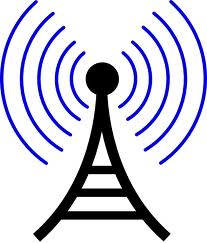
Example: "Many coffee shops offer customers Internet access through a Wi-Fi connection."
Widget
Widgets are small programs designed for the Mac OS X Dashboard. Some widgets included with Mac OS X include a dictionary, calendar, weather forecast, and stock list widget. Several thousand other dashboard widgets are available from third-party developers.
Unlike standard applications, widgets are not standalone programs. Instead, they can only be run within the Mac OS X Dashboard. While this limits the capabilities of widgets, they are not meant to be full-blown applications. Instead, each widget is designed to serve a single purpose. Since the Dashboard can display multiple widgets at once, it provides a simple interface for performing several common tasks.
Wiki
A wiki is a Web site that allows users to add and update content on the site using their own Web browser. This is made possible by Wiki software that runs on the Web server. Wikis end up being created mainly by a collaborative effort of the site visitors. A great example of a large wiki is the Wikipedia, a free encyclopedia in many languages that anyone can edit. The term "wiki" comes from the Hawaiian phrase, "wiki wiki," which means "super fast." I guess if you have thousands of users adding content to a Web site on a regular basis, the site could grow "super fast."
Win32
This is the Windows application programming interface (API) for developing 32-bit applications. It has been used for Windows 95, Windows 98, Windows NT, and newer Windows operating systems. This means that if you use Windows 95 or later, you can run 32-bit applications on your computer. Win32 is a term that is important to programmers, but is not crucial for the average user to know. Just know that if you have Windows 95 or later, you can run Win32 applications. If you want to learn more about Win32, including a bunch of technical jargon, you can visit Microsoft's Developer Website for more information.
Windows 7
Windows 7 is the seventh version of the Microsoft Windows operating system. It follows Windows Vista and is designed to be a sleeker operating system than its predecessor, with faster performance and fewer compatibility issues. Windows 7 also include several new features, such as multitouch support for touchscreen interfaces, a simple home networking system called "HomeGroup," and an improved Windows Search feature.
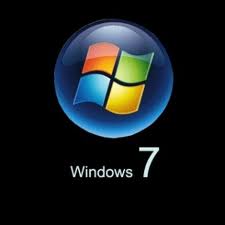
Windows 7 is available in three editions in the United States, including Home Premium, Professional, and Ultimate editions. There is also a Home Basic version available in other countries, as well as an Enterprise edition that is only sold to companies through volume licensing.
Windows Vista
Windows Vista is the latest version of Microsoft's Windows operating system. The business version was released at the end of 2006, while the consumer version shipped on January 30, 2007.
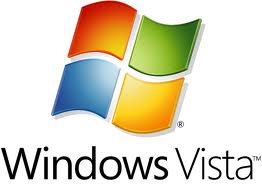
The Vista operating system includes an updated look from Windows XP, referred to as the "Aero" interface. The desktop, windows, icons, and toolbars have a smoother 3D look, similar to the Mac OS X interface. These graphics are generated using the new Windows Presentation Foundation (WPF) graphics subsystem included with Windows Vista. Other improvements include faster indexed file searching (which can locate text within files), built-in Web services called the Windows Communication Foundation (WCF), support for the new XML Paper Specification (XPS) document format, numerous security improvements, and more multimedia capabilities built into the operating system.
Windows Vista was code-named "Longhorn" for much of the development process. The operating system was originally slated to ship in 2003 as an update to Windows XP, but Microsoft decided to make additional updates to the operating system and scheduled it for release in 2005. Several delays pushed back the release date to 2006 and eventually to the beginning of 2007. In order to ship the consumer version by early 2007, the new file system called Windows Future Storage, or WinFS, was left out of the release. Microsoft plans to incorporate the WinFS file system in a future update.
Overall, Vista is a major upgrade to the Windows operating system (which is a good thing, since it has been over five years since Microsoft's last major OS release). The interface feels more modern, file navigation has been improved and system security has been designed to be stronger than Windows XP.
If you plan to purchase Windows Vista for your system, you can choose one of five options:
Business - designed for small business users and streamlined for work-oriented tasks
Enterprise - meant for large, global organizations with complex IT infrastructures
Home Basic - the most basic version of Vista designed for the average home user
Home Premium - a more robust home version that includes extra security and multimedia features
Ultimate - includes all the features from the Home Premium and Business versions of Vista
Windows XP
Microsoft Windows XP was introduced in 2001 and is the most significant upgrade to the Windows operating system since Windows 95. The previous version of Windows, called Windows Me (or Millennium Edition) still had the look and feel of Windows 95 and was known to have stability issues and incompatibilities with certain hardware.
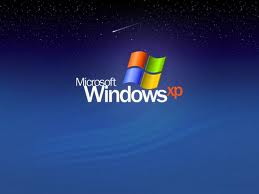
Windows XP addressed many issues of its predecessor and added a number of other improvements as well. It is a stable operating system since it is built on the Windows 2000 kernel, which is known for its reliability. XP also has a new, more modern look, and an interface that is more easy to navigate than previous versions of Windows. While not written from the ground up, like Mac OS X, Windows XP is a substantial system update. The letters "XP" stand for "eXPerience," meaning the operating system is meant to be a new type of user experience.
Wizard
When most people think of a wizard, they think of an old man with magical powers. This, as with many other computer definitions, has no correlation with the technical term. In computer terminology, a wizard is a part of a program that guides you through certain steps. For example, a wizard in Microsoft Word would help you create and format a new document according to your needs. This is helpful when creating a r?sum?, outline, invoice, etc. Some other examples of wizards are the Finale 2000 wizard, which helps you create a new music composition with your desired instruments, and the PowerPoint wizard, which helps you set up a presentation using a certain theme.
Basically, a wizard acts as a guide for creating a new document in a software program. Though wizards can be helpful, sometimes they can be more of a hassle than a help for experienced users. Some users would rather just create a new document from scratch, without using a wizard. This is because wizards typically don't offer as much customization as an experienced user may want. Finally, be sure not to confuse a "wizard" with a "template." A template is a pre-formatted document that has already been created, whereas a wizard is a step-by-step guide that helps you create your own document.
Word Processor
A word processor, or word processing program, does exactly what the name implies. It processes words. It also processes paragraphs, pages, and entire papers. Some examples of word processing programs include Microsoft Word, WordPerfect (Windows only), AppleWorks (Mac only), and OpenOffice.org.
The first word processors were basically computerized typewriters, which did little more than place characters on a screen, which could then be printed by a printer. Modern word processing programs, however, include features to customize the style of the text, change the page formatting, and may be able to add headers, footers, and page numbers to each page. Some may also include a "Word Count" option, which counts the words and characters within a document.
While all these features can be useful and fun to play with, the most significant improvement over the typewriter is the word processor's ability to make changes to a document after it has been written. By using the mouse, you can click anywhere within the text of a document and add or remove content. Since reprinting a paper is much easier than retyping it, word processing programs have make revising text documents a much more efficient process.
The term "text editor" can also be used to refer to a word processing program. However, it is more commonly used to describe basic word processing programs with limited features.
Word Wrap
Word wrapping is when a line of text automatically "wraps" to the next line when it gets to the end of a page or text field. This is different than a "word rap," which involves rhyming words to a rhythmic beat, though that may be more fun than typing. Most word processing programs use word wrap to keep the text within the default margins of the page. Without the word wrap feature, text would continue on one line until the user pressed "Enter" or "Return" to insert a line break.
Most programs that incorporate word wrap take the first word that does not fit on a line of text and move it to the beginning of the next line. Advanced word processing programs can hyphenate long words at appropriate places. While it is uncommon, sometimes a word, or string of characters ,will take up more than one line. In this case, the word wrap feature will simply continue the string of characters onto the next line.
Worm
Worm has two widely different definitions. One refers to a computer virus and the other is an optical storage technology:
1) A type of computer virus
Just like regular worms tunnel through dirt and soil, computer worms tunnel through your computer's memory and hard drive. A computer worm is a type of virus that replicates itself, but does not alter any files on your machine. However, worms can still cause havoc by multiplying so many times that they take up all your computer's available memory or hard disk space. If a worm consumes your memory, your computer will run very slowly and possibly even crash. If the worm affects your hard disk space, your computer will take a long time to access files and you will not be able to save or create new files until the worm has been eradicated.
Worms are hard to detect because they are typically invisible files. They often go unnoticed until your computer begins to slow down or starts having other problems. Unlike viruses and Trojan horses, worms can replicate themselves and travel between systems without any action from the user. For these reasons, it is good to have an antivirus program installed on your system that can detect and remove worms before they have a chance to replicate or spread to other computers. Security updates such as Windows Update also patch security holes that allow worms to infect your computer. So keep your security updates and virus definitions up-to-date and you should be able to keep your computer worm-free.
2) An optical storage technology
WORM can also mean "Write Once, Read Many." It is an optical storage technology that allows a disc to be written only once but read an unlimited number of times. WORM devices were introduced in the 1970's and gained popularity as a way of archiving data. The storage capacity of WORM discs began around 140MB, but increased to more than 3.0GB over the past few decades. Yet the WORM technology has no standard format, so WORM discs are only compatible with the drives that wrote them. This limitation has kept WORM equipment relatively expensive and has kept the technology from gaining widespread acceptance.
Today, most optical drives are based on either CD-R or DVD-R technology. Unlike WORM discs, CD-Rs and DVD-Rs can typically be read by any CD or DVD drive, regardless of the manufacturer. Because of their improved compatibility and lower costs, writable CDs and DVDs have all but replaced WORM media.
WPA
Stands for "Wi-Fi Protected Access." WPA is a security protocol designed to create secure wireless (Wi-Fi) networks. It is similar to the WEP protocol, but offers improvements in the way it handles security keys and the way users are authorized.
For an encrypted data transfer to work, both systems on the beginning and end of a data transfer must use the same encryption/decryption key. While WEP provides each authorized system with the same key, WPA uses the temporal key integrity protocol (TKIP), which dynamically changes the key that the systems use. This prevents intruders from creating their own encryption key to match the one used by the secure network.
WPA also implements something called the Extensible Authentication Protocol (EAP) for authorizing users. Instead of authorizing computers based soley on their MAC address, WPA can use several other methods to verify each computer's identity. This makes it more difficult for unauthorized systems to gain access to the wireless network.v
WWW
Stands for "World Wide Web." It is important to know that this is not a synonym for the Internet. The World Wide Web, or just "the Web," as ordinary people call it, is a subset of the Internet. The Web consists of pages that can be accessed using a Web browser. The Internet is the actual network of networks where all the information resides. Things like Telnet, FTP, Internet gaming, Internet Relay Chat (IRC), and e-mail are all part of the Internet, but are not part of the World Wide Web. The Hyper-Text Transfer Protocol (HTTP) is the method used to transfer Web pages to your computer. With hypertext, a word or phrase can contain a link to another Web site. All Web pages are written in the hyper-text markup language (HTML), which works in conjunction with HTTP.
WYSIWYG
Stands for "What You See Is What You Get," and is pronounced "wihzeewig." WYSIWYG refers to software that accurately represents the final output during the development phase. For example, a desktop publishing program such as Photoshop is a WYSIWYG graphics program because it can display images on the screen the same way they will look when printed on paper. Word processing programs like Microsoft Word and Apple Pages are both WYSIWYG editors, because they include page layout modes that accurately display what the documents will look when printed.
While WYSIWYG originally referred to programs that produce physical output, the term is now also used to describe applications that produce software output. For example, most Web development programs are called WYSIWYG editors since they show what Web pages will look like as the developer is creating them. This means that the developer can move text and images around the page to make it appear exactly how he or she wants before publishing the page on the Web. When the page is published, it should appear nearly the same on the Web as the way it looked in the Web development program. Of course, as most Web developers know, there is no guarantee that a Web page will look the same in two different browsers, such as Internet Explorer and Firefox. But at least a WYSIWYG editor can give developers a close approximation of what the published page will look like.

| Terms |
| W3C |
| WAN |
| Web 2.0 |
| Web Host |
| Web Page |
| Webcam |
| Webmail |
| Webmaster |
| Website |
| WHOIS |
| Wi-Fi |
| Widget |
| Wiki |
| Win32 |
| Window 7 |
| Window Vista |
| Window XP |
| Wizard |
| Word Processor |
| Word Wrap |
| Worm |
| WPA |
| WWW |
| WYSIWYG |
| Web Pages by Students |
ABC of C Language by Shailender Sharma |
Bootable Pen Drive by Avtar Singh |
e-Trash or e-Treasure? by Pallavi Bagga |
Lakshya by Rabina Bagga |
OOPs Concepts by Navjot Kaur |
Fitness First by Ankush Rathore |
Information Systems by Kajal Gupta |
Quiz Contest in C++ by Rajnish Kumar |
Core Java (Tutorial) by Shyena |
C Language Q&A by Anmol Sharma |
HTML 5 Tutorial by Kishan Verma |








